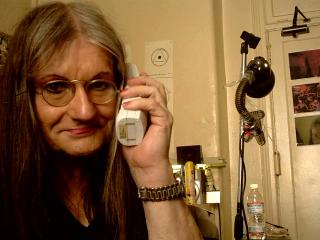ABSTRACT EXPRESSIONISM
Abstract Expressionism, also known as the New York School or Action Painting, was a vastly influential movement of modern art that began in the late 1940s and peaked in the late fifties/early sixties.. It was the first truly American art movement and was located principally in New York City, although there were pockets of it all over America. Other influential centers were the San Francisco area and the Pacific Northwest.
Chronologically Abstract Expressionism evolved out of the Surrealism of the 1930’s and was followed by the Pop Art of the 1960’s.
One of the most noticeable characteristics of many abstract expressionist paintings was their enormous size, larger than paintings had ever been before.. Many of the leading proponents of the field had been employed by the Public Works Project during the depression painting murals around the New York area, so they came by their expertise honestly. Typically a painting’s dimensions might be determined by the painter’s height and the reach of his outstretched arms. The large size brought about a change of perspective, allowing the viewer to “get inside” the painting, making it truly an assault on the senses.
Most Abstract Expressionists eschewed figuration and banished any trace of picturation or representative imagery from their works, preferring instead to create their compositions from pure form and color. Even titles were considered too suggestive and would distract from the appreciation of the pure composition and were replaced with numbers or letters or combinations of both.
Emotional content was valued, however, and many paintings were explicitly emotional. A technique, automatism, was borrowed from surrealism giving proponents access to subconscious and unconscious elements to further heighten the emotional impact of their paintings. Further, the act of painting, the moment of artistic creation was valued, hence the term action painting. Many techniques were devised to depict or record this moment, including dripping, pouring, or splashing the paints, or other more exotic, more bizarre methods of applying paint to the canvas.
Several styles of painting evolved, including the all over style of painting in which the entire surface of the canvas is used without regard to a physical center, up or down, or left or right, so that a painting could be looked at from any angle and still make sense. The drip paintings were done without standard painters’ utensils, brushes, spatulas, etc., making figuration in the conventional sense impossible. The color field paintings juxtaposed areas of different colors to create. tension, resolution, and dynamic composition.
Many of the greatest painters were presented in exhibition by art collector and dealer Peggy Guggenheim at her Art of This Century Gallery in New York City.
Among the most famous artists of the Abstract Expressionist Movement were Jackson Pollock, Franz Kline, Willem de Kooning, Mark Rothko, Clyfford Still, Barnett Newman, Robert Motherwell and Joan Mitchell. Many single paintings by these artists have a value in the tens of millions of dollars, Collectively their paintings would have an estimated combined value in excess of hundreds of billions of dollars in today’s art market.


0 Comments:
Post a Comment
<< Home